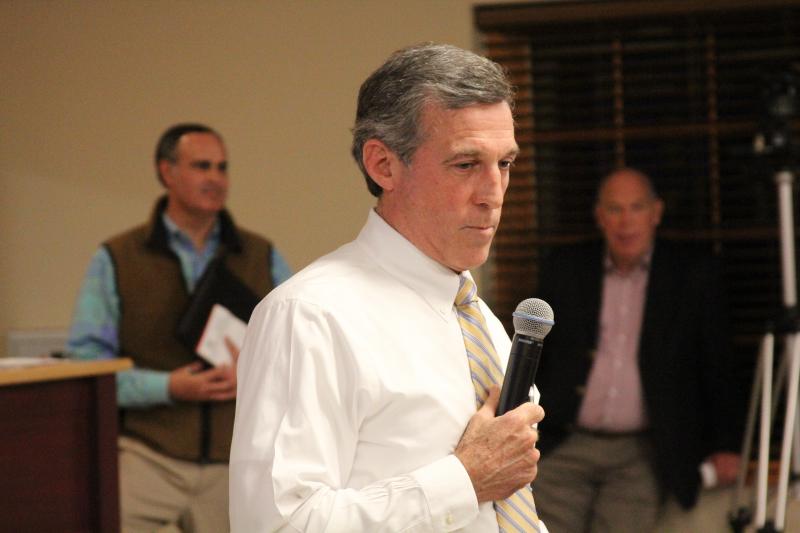Gov. John Carney said the COVID-19 pandemic is likely to cost Delaware at least $500 million in lost revenue – and if the stay-at-home order is extended beyond May 15 and into the summer season, Carney said, the loss could creep toward $1 billion, nearly a quarter of the state’s $4.45 billion budget.
“I think anybody who knows a little bit about the math can conclude that we’re going to have a tough fiscal time come later this spring and early summer,” Carney said during a call with the Delaware State Chamber of Commerce April 3.
The positive thing about the federal stimulus, he said, is that it guaranteed every state at least $1.25 billion. However, he said, Delaware can’t use any of that money for lost revenue. Carney said $500 million is about 11 percent of the state’s annual revenue.
“We all just need to be smart as we try to get the economy going again,” he said “It’s in everybody’s interest, and it’s everybody’s objective to help businesses survive this.”
On the call with the chamber, small business owners across the state said the larger national chains may be taking advantage of the situation by being deemed essential and selling a wide variety of nonessential items.
The remedy for that is unclear. “It just seems to me that it would be an enforcement nightmare,” Carney said.
In a press conference April 3, Carney said he has kept liquor stores open because healthcare providers informed him that if liquor stores are closed, people who are alcohol dependent would end up in the emergency room with withdrawal. “There's a rationale behind all of that,” he said.
Following his latest emergency order limiting crowds and interaction among shoppers, Carney said open businesses are doing a great job limiting capacity and marking floors with 6-foot indicators for shoppers.
“Everything is based on the idea of public safety and social distancing,” he said. “We’ve been very hard on some of these establishments that have stayed open because they haven’t enforced social distancing.”
Construction sites are also a concern. Carney said he has driven by sites where workers are not abiding by 6-foot distancing, usually when they are on break. “If they don't follow the rules we're going to have to shut them down,” he said.
Workers are also supposed to have only one person per vehicle. “There are a lot of changes in the way they are doing business,” he said.
Flattening the curve
Carney said models show the next two weeks will be critical in flattening the curve.
“These are very trying times in our state,” Carney said. “These are circumstances that are unprecedented in our lifetimes. The last time we had a public health pandemic like back in 1918, a flu pandemic killed thousands here in Delaware and ravaged around the country. We’re maybe in a similar situation today. It’s certainly uncharted waters for all of us.”
Carney said the state is prepared for a potential spike in positive cases and hospitalizations.
“We do feel pretty good about our approach to surge capacity,” Carney said. “The hospitals only have so many available rooms, available ICU rooms, critical care staff and ventilators. We feel pretty good about the number of ventilators we have relative to the rooms available.”
Based on FEMA predictions and the state’s own expert prediction chart, Carney said, he feels confident Delaware has enough ventilators. A.J. Schall, director of Delaware Emergency Management Agency, said Bloom Energy is refurbishing and retrofitting ventilators that have been stockpiled for about a decade. So far, he said, 35 have been finished, and he expects another 60 shortly. “They will be on the shelves ready to be distributed as needed,” he said. Schall said the state also has procured some ventilators on the open market.
Dr. Karyl Rattay, director of Division of Public Health, said the state has practiced conservation of personal protective equipment – masks, gowns, gloves – for about a month, encouraging reuse when possible.
“It is uncomfortable for a lot of healthcare providers who are used to throwing a lot of PPE away on a regular basis,” she said. “For many of them, it's not what they're used to.”
Rattay said there are no shortages, but they are keeping an eye on supplies to make sure everyone is safe when the surge comes.
Carney said the state has two weeks’ worth of tests for the state – an estimate which did not include the 5,000 rapid tests delivered to Delaware April 4.
As hospitals gear up to handle the potential surge, Carney said, the state is looking into setting up alternative care sites outside of the hospitals for patients who need treatment but not for COVID-19.
In New Castle County, A.I. duPont/Nemours has close to 100 beds available for non-COVID-19 patients, he said. They are also looking to use existing space at Bayhealth in Kent and Sussex as well as Beebe Healthcare. There is not a lot of extra space at Nanticoke in Seaford, he said. In a DEMA release April 6, officials said site assessments in Sussex County continue, and options include the old Milford Memorial Hospital and a National Guard field option adjacent to one of the current hospitals.
Carney said it is better to keep COVID-19 in the hospitals where assets such as oxygen, pharmacies and other resources are readily available.
“It's better to do it there where you're close to these services that you otherwise would have to stand up if you took it to a facility remote from Beebe, Nanticoke or Bayhealth,” he said. “That's a bit of a turn this past week.”
As the holiday season approaches with Easter, Passover and Ramadan, Rattay said she knows how important those days are for many, but she suggests virtual dinners and virtual services to prevent spreading COVID-19 during this year's celebrations.
“We are imploring everyone to think now how you are going to do this differently this year,” she said.




















































